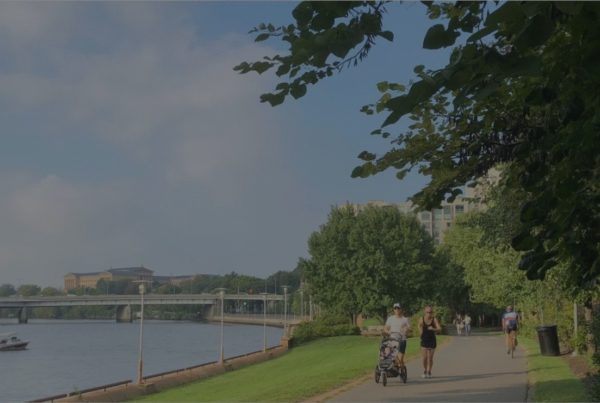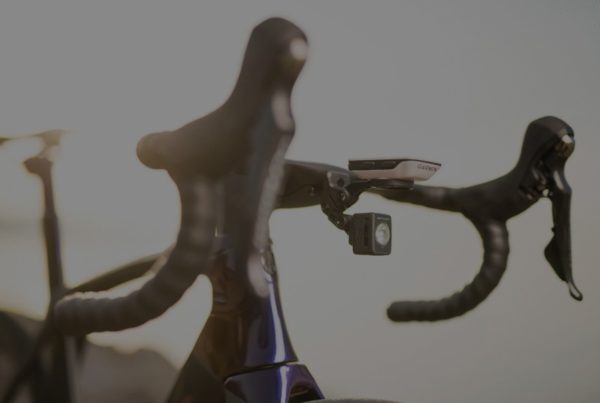Insurance companies have a sneaky way of trying to avoid paying the true value of your bike if you’re hit by a car. Here’s why.
Roadie: “Earlier today, I was on a ride and a driver hit me from behind while I was stopped at a red light. Luckily, I was not injured, but the driver completely crunched the frame of my bike. I called insurance to make a replacement claim, and the adjuster asserted my bike was only worth $3,000, even though I have made upgrades to the bike that value it well over $6,000.”
Lawyer: “Did the insurance company say how it determined the valuation of your bike?”
I frequently help cyclists deal with personal injury claims. Occasionally, a cyclist will leave the scene of a collision uninjured, but their bike will be totaled. You would think that insurance companies would be happy to cover the replacement cost of the bike in situations like this because they don’t have to cover medical expenses. But in reality, insurance companies don’t take these types of collisions seriously. Consequently, it can be difficult for a cyclist, who left the scene of the collision unharmed, to acquire the true value in a replacement bike for their damaged property.
Credible valuation companies play an important role in our society when dealing with insurance companies that dispute the true value of a damaged bike or car. For example, Kelley Blue Book has facilitated the market for used cars since 1926, when Les Kelly first created his Blue Book to manage his car dealership in Southern California.
Kelly’s early car valuations relied on the number of miles the car had been driven, and it proved to be a reliable method for determining a car’s true value. Kelly adopted the term, “Blue Book,” from elite social circles in Great Britain, which were famous for maintaining prestigious registers of their business affairs. Today, no one can doubt the credibility of Kelly Blue Book (KBB). Unfortunately, there is not a comparable version of KBB for bikes.
When an insurance company faces a claim for damaged or stolen property, it searches for ways to minimize the cost of replacing the property. Specifically, insurance adjusters are unfairly using Bicycle Blue Book (BBB) to justify offering less than the true value for a damaged bike.
BBB is a website that roadies use to sell or buy road bikes. BBB provides a great service by creating a legit marketplace for used road bikes. In essence, sellers can list their used bike, potential buyers can browse listed bikes across the country, and partnered bike shops inspect the bike before a transaction closes to make sure it’s in good condition. Since BBB came online in 2011, it has made buying and selling used bikes a lot easier.
Unfortunately, insurance adjusters are unfairly using BBB’s transactional data as an authoritative source for a bike’s current value when facing an insurance claim. Often, this allows the insurance company to save a buck. Insurance companies argue that BBB is the same as KBB for determining a valuation, but comparing the two companies is like comparing apples and oranges. BBB’s main purpose is to serve as a marketplace for roadies. It was never intended to be used by insurance companies. In contrast, KBB is a complex evaluation tool that bases its prices on layers of regulated car markets that do not exist in the bicycle world.
Specifically, KBB tracks auctions to obtain the value floor of a vehicle and tracks independent retail transactions at dealerships in the warrantied secondary market that are regulated by law. The wholesale auction price of a used car allows KBB to determine the price floor for a used car in a retail transaction. KBB then tracks retail transactions at dealerships in the secondary market for used cars.
Consumer protection laws regulate retail transactions in the secondary market and require dealers to inspect their vehicles and warrant their value. The applicable consumer protection laws are extremely important because they hold dealers accountable for their valuation. KBB relies on the fact that dealerships are held accountable when it makes its valuations. BBB, on the other hand, does not have a regulated secondary market for bicycles it can rely upon. Thus, BBB’s transactional data should not be used by insurance companies.
Insurance adjusters are constantly searching for new ways to save money, and that’s what they are doing with BBB’s valuations. To combat the insurance company’s tactics, the following arguments should be used when a cyclist is negotiating for property damage caused by a driver’s negligence:
- KBB’s valuations rely upon a vehicle’s odometer. In contrast, bicycles don’t have odometers, so it’s impossible to determine how many miles the bike has traveled.
- There is no way of knowing whether bikes on BBB have been involved in crashes or have been properly maintained. In addition, many bike collisions go unreported. Whereas, Carfax uses a web-based service that supplies vehicle history reports on maintenance and crashes.
- Most automobiles are mass-produced by a handful of manufacturers and have standard parts and components. In contrast, road bikes come from a vast sea of manufacturers and have custom components and accessories. This difference makes pinpointing a value on a customized road bike much more difficult than on a 2000 Ford Explorer.
- Consumer protection laws regulate car dealerships at the retail level and require them to inspect and warrant the vehicles they sell. Because dealers are held accountable for their inspection by law through warranty, vehicle valuations are accurate.
Hopefully, you will be able to obtain fair compensation for your damaged bike using these arguments. If not, look to your state laws for available legal actions to ensure you get a blue ribbon result — or at least don’t get ripped off.
This article, How Valuable is your Bike?, was originally published on VeloNews on June 1, 2018.
Now read the fine print:
Bob Mionske is a former competitive cyclist who represented the U.S. at the 1988 Olympic Games (where he finished fourth in the road race), the 1992 Olympics, as well as winning the 1990 national championship road race.
After retiring from racing in 1993, he coached the Saturn Professional Cycling team for one year before heading off to law school. Mionske’s practice is now split between personal-injury work, representing professional athletes as an agent and other legal issues facing endurance athletes (traffic violations, contract, criminal charges, intellectual property, etc.).
Mionske is also the author of “Bicycling and the Law,” designed to be the primary resource for cyclists to consult when faced with a legal question. It provides readers with the knowledge to avoid many legal problems in the first place, and informs them of their rights, their responsibilities, and what steps they can take if they do encounter a legal problem. If you have a cycling-related legal question please send it to Bob, and he will answer as many of these questions privately as he can. He will also select a few questions to answer in this column. General bicycle-accident advice can be found at bicyclelaw.com.
Important notice:
The information provided in the “Legally Speaking” column is not legal advice. The information provided on this public website is provided solely for the general interest of the visitors to this website. The information contained in the column applies to general principles of American jurisprudence and may not reflect current legal developments or statutory changes in the various jurisdictions and therefore should not be relied upon or interpreted as legal advice. Understand that reading the information contained in this column does not mean you have established an attorney-client relationship with attorney Bob Mionske. Readers of this column should not act upon any information contained in the website without first seeking the advice of legal counsel.
@ Bob Mionske 2018. All Rights Reserved.




